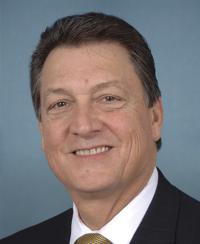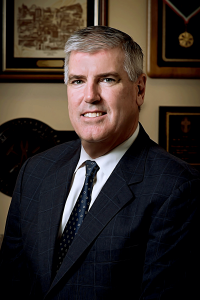Retired Texas State Legislative Director Cornelius “Connie” M. English Jr., 74, died at his home of Congestive Heart Failure, Sat., Oct. 14.
A veteran of the Army National Guard, English joined the Army in 1962 and was stationed in Ft. Polk, Louisiana; Bergstrom Air Force Base in Austin, Texas; and in Okinawa, Japan from 1962 to 1965.
Upon his retirement from the Army, English went to work for Southern Pacific Transport Co. After seven years, he hired out with Southern Pacific Railroad as a brakeman and later as a conductor.
From 1999 until his retirement in 2015, English served the membership as state legislative director of Texas. His son, Brian English, currently serves on the Texas state legislative board as assistant state legislative director.
A visitation is scheduled 5-9 p.m. Oct. 19, with a funeral service at 11 a.m. Oct. 20, at Mission Park Funeral Home South, 1700 SE Military Dr., San Antonio, Texas.
A link to an obituary by the Texas AFL-CIO is here.
Author: bnagy
On October 6, 2017, the six Rail Unions comprising the Coordinated Bargaining Group (CBG) announced that they had reached a Tentative National Agreement with the Nation’s Freight Rail Carriers. Shortly after that announcement, a Union belonging to a different bargaining coalition began a campaign of misinformation, misrepresentation and outright falsehood in an effort to disrupt and undermine the democratic ratification process of the CBG Unions. This anti-union activity has included public letters replete with falsehoods, leaflets at TY&E on-duty points, also filled with falsehoods, and a social media campaign intended to negatively influence the ratification process of the CBG Unions. We can no longer stand by and allow this anti-union interference and disruption to go unchecked.
Before the Section 6 Notices were filed in late 2014, the Union now interfering in our ratification process was invited to join together with all unions to bargain jointly. That Union rejected this invitation, and set out on its own as the smallest of the three coalitions in the bargaining round. Without informing the other ten Unions at the table, that smaller coalition offered the railroads its own version of Plan Design Change to the Health Care plan. In its public contract offer in the Spring of 2017, that group offered Plan Design Changes valued by their own math at over $200,000,000.00 to the Carriers. It was only after the railroads rejected this proposal, absent the buy in of the other ten Unions, that this smaller coalition offered to share its proposals with the CBG Unions.
Contrary to what that group would now have you believe, only one of the ten other Unions in negotiations were ever invited to join the smaller coalition, and to date not one of those ten other Unions has signed onto the smaller coalition’s version of Plan Design Change.
That smaller group now argues that their Plan Design Proposal would cost you nothing; that is not a proven fact. Here are the facts:
- The Union interfering in your ratification process does not have the support of 10 other Unions at the bargaining table and they couldn’t care less what any other Union thinks.
- The Union interfering in your ratification process does not have an agreement with the railroads to even compare to the CBG Tentative Agreement. Proposals are not Agreements.
- Due to its failure to obtain an agreement, the Union interfering in your ratification process has publicly declared to the National Mediation Board that they are at an impasse in negotiations and have no plans to bargain further.
- Instead, the Union interfering in your ratification process has publicly stated that it plans to put its Healthcare dispute before the Federal Government for resolution, knowing that the current Congress is one of the most Corporate owned, anti-labor, anti-healthcare, Federal Governments in years.
- The Union interfering in your ratification process made the decision to put its own membership at risk in this way without allowing them to have any say through a ratification vote.
- The Union interfering in your ratification process wants you to vote no and join it before the Federal Government, and it does not care if your wages, benefits and work rules are put at risk.
Refraining from attacking another Union in the performance of its negotiating obligations is a core principle of Trade Unionism. The Union interfering in your ratification process does not have the same exposure to significant work rules changes that you do and has publicly stated that it does not care if your work rules are eliminated. The leaders of that Union at the highest level have been repeatedly asked to stay out of our ratification process, and they have refused.
This is the opposite of true Brotherhood; don’t be conned by their anti-union activities. Take the time to understand all your options and the risks associated with each, and then be sure to participate by voting in your ratification process, a process that the interfering Union does not think you are entitled to.
# # #
The Coordinated Bargaining Group is comprised of six unions: the American Train Dispatchers Association; the Brotherhood of Locomotive Engineers and Trainmen (a Division of the Rail Conference of the International Brotherhood of Teamsters); the Brotherhood of Railroad Signalmen; the International Brotherhood of Boilermakers, Iron Ship Builders, Blacksmiths, Forgers, and Helpers; the National Conference of Firemen and Oilers / SEIU; and the Transportation Division of the International Association of Sheet Metal, Air, Rail and Transportation Workers.
Collectively, the CBG unions represent more than 85,000 railroad workers covered by the various organizations’ national agreements, and comprise over 58% of the workforce that will be impacted by the outcome of the current bargaining round.
To view this release in PDF form, click here.
SMART TD opposes the recent nomination of former U.S. Rep. Lynn A. Westmoreland of Georgia by the Trump administration to serve on the Board of Directors of Amtrak.

Please see below former Representative Lynn Westmoreland’s extreme voting record on Amtrak in the 114th Congress (2015-2016):
- RCV#110: Voted YES on McClintock Amendment to H.R. 749 — Eliminate ALL Amtrak Funding (3/4/15)
- RCV#303: Voted YES on Brooks Amendment to H.R. 2577 — Eliminate Amtrak Operating Grants (6/4/15)
- RCV#304: Voted YES on Brooks Amendment to H.R. 2577 — Eliminate Amtrak Capital/Debt Service Grants (6/4/15)
- RCV#314: Voted YES on Sessions Amendment to H.R. 2577 — Prohibit Funds for Sunset Limited Line (6/9/15)
- RCV#315: Voted YES on Sessions Amendment to H.R. 2577 — Prohibit Funds for Amtrak Routes 2x Cost/Revenue (6/9/15)
Earlier this year, Trump’s budget proposal to Congress for fiscal year 2018 called for eliminating federal support for Amtrak’s long distance train services, which would result in the immediate loss of 10,000 non-Northeast Corridor Amtrak jobs and the destabilization of the Railroad Retirement trust fund.
Sheet Metal, Air, Rail and Transportation Workers’ Transportation Division National Legislative Director John Risch appeared this morning (Wednesday, Oct. 11) before the Surface Transportation Board (STB) at a listening session about service disruptions caused by CSX’s move to excessively long trains.
Here are the remarks he delivered before the listening session:
I appreciate the opportunity to appear here today. My name is John Risch and I am the National Legislative Director for the Transportation Division of the International Association of Sheet Metal, Air, Rail and Transportation Workers (SMART TD). SMART TD – formerly the United Transportation Union – our union is the largest of the rail unions in an industry that is almost 90 percent organized.
On the CSX railroad I represent conductors, engineers, switchmen and yardmasters. In my brief time to comment today I will talk about how CSX’s move to excessively long trains has resulted in substantial service disruptions.
Freight trains in America are typically one to one-and-one-half miles long, but in recent months CSX has routinely been operating trains that are two and even three miles in length.
These excessively long trains cause all sorts of logistical problems that cause tremendous amounts of delay wherever they go.
- A three-mile-long train simply goes slower than a one-mile long train. It takes longer to start and get to top speed which is almost never the maximum allowable speed because they are simply too heavy and hard to handle. Slowing down for speed restrictions and getting back up to speed takes far more time.
- Most rail main lines in our nation are single-track, so when one train meets another train coming in the opposite direction one of the trains must pull into a siding to let the other train pass. There are very few sidings that are long enough to hold a 2-3-mile-long train, meaning if the long train takes the siding both trains must stop and there is what we call a “saw-by” causing significant delay. If both trains are too long we have an incredible event called a “double saw-by” which can take hours for one to pass the other.
- Train operations require that the crew in the lead locomotive maintain constant communications with the rear locomotives or the device on the rear car of the train. When these communications fail the train is restricted to 30 mph and on grades of more than 2% the train is required to stop. The longer the train the more these communications fail. This loss of communications is very common when trains go around curves or go over the tops of mountains.
- The longer the train the higher the probability of mechanical failure. More cars mean more problems. Excessively long trains are also far more likely to break-in-two which can cause hours of delay. When there is a mechanical problem or break-in-two the trains conductor must walk back from the lead locomotive to deal with the problem. When the train is two miles long or longer and the conductors’ portable radio oftentimes fails to communicate with the locomotive causing significant delay. A train uses air for its braking system and the longer the train the harder it is to maintain adequate air in the system.
- Many CSX engineers have little to no experience operating these excessively long trains. We have many instances of these trains breaking in two and causing significant delays, including delaying an Amtrak train for 9 hours on a siding in Florida.
- When a train is too long to fit into a yard track the train must be separated and put on two or more tracks, adding to yard congestion and additional delay.
- The longer the train the more crossings that are blocked and they are blocked for longer periods of time. Causing safety concerns. See letter from Indiana school.
- Crews cannot reliably hear the report of wayside defect detectors when trains exceed 12,000 feet. When that happens, the train must stop and follow procedures to make sure their train is safe to proceed.
- Required brake tests take longer on a long train. Some brake tests require the inspection of every car and walking a 3-mile-long train to the end and back is 6 miles. Add to that a portable radio that fails to transmit and the result is substantial train delay.
- Trains are too long for foreign line yards: for example, the Belt Railway of Chicago only accepts 8,000 foot trains. However, CSX has sent many 9,000+ foot trains there that have been rejected requiring the crew to divert to Barr Yard and set out enough cars to get down to the 8,000-foot maximum before returning to the BRC Yard.
The question of the day is: “What can the STB do about it?”
- We recommend that the STB immediately restrict train lengths to not exceed the length of the sidings on lines these trains operate on.
- Or at the very least conduct an investigation on the effect train lengths have on service and safety in the industry.
Urging CSX to do better will not fix the problems that excessively long trains cause.
I wrote the FRA last April asking for action on this issue and they have so far not even responded to my letter. They have no Administrator and are reluctant to do anything until they do.
| Conductor rate of pay | |||
|---|---|---|---|
| Effective Date | GWI Percent | Daily Rate | Hourly Rate |
| Current (as of July 1, 2024) | Amendable | $292.40 | $36.59 |
| July 1, 2025 | 4.00% | $304.10 | $38.05 |
| July 1, 2026 | 3.75% | $315.50 | $39.48 |
| July 1, 2027 | 3.50% | $326.54 | $40.86 |
| July 1, 2028 | 3.25% | $337.15 | $42.18 |
| July 1, 2029 | 3.00% | $347.26 | $43.45 |
| Yard foreman rate of pay | |||
|---|---|---|---|
| Effective Date | GWI Percent | Daily Rate | Hourly Rate |
| Current (as of July 1, 2024) | Amendable | $327.70 | $40.96 |
| July 1, 2025 | 4.00% | $340.81 | $42.60 |
| July 1, 2026 | 3.75% | $353.59 | $44.20 |
| July 1, 2027 | 3.50% | $365.96 | $45.75 |
| July 1, 2028 | 3.25% | $377.86 | $47.23 |
| July 1, 2029 | 3.00% | $389.19 | $48.65 |
| Increase value compounded over 5-Year Term=18.77% Average Increase Per Year over 5-Year Term=3.50% |
| Total Value Over 5-Year Term = $49,116.60 |
| Note: Values based on 40-hour/5-day work-week as Yard Foreman (RCO Foreman would be higher as it includes RC Pay [46 minutes], which would will also increase annual!y based on the GWI) |

 hear and respond to concerns and questions from members.
hear and respond to concerns and questions from members.